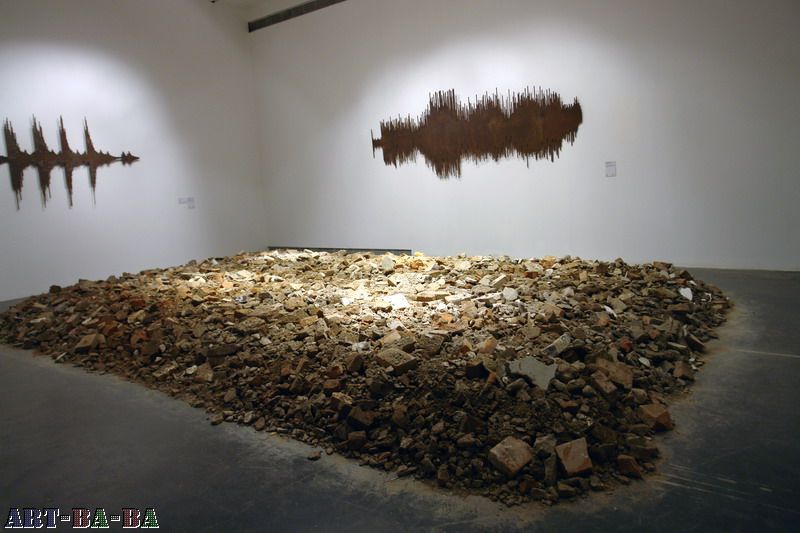This large installation, entitled Calm, composed of bricks and debris spread on the floor, alludes to the rubble of a house that has been blown up or a tomb. At first hardly perceptible to the viewer, the ruins undulate as if the earth underneath was breathing, slowly and weakly. The work symbolizes with cynicism the perpetual wars and conflicts in Middle Eastern countries, pointing out territorial issues as well as the ongoing destruction of lives and culture in this part of the world.
Calm refers to the peace and silence following a tragedy, when everything is over. Only a fragile wave of hope and survival remains under an illusory surface, stifled, buried, waiting to be freed and prevent the annihilation of a civilization. Simultaneously, it embodies the “calm” preceding the storm, before anything happens, as a latent and imminent danger boiling with hatred and rebellious feelings, a voice from beyond the grave.
The waving movement, almost invisible, re-creates the effects of a mirage produced by hot air layers. A feeling of vertigo, captivating and hypnotizing at the same time, take hold of viewers, leading them to their subconscious. The work plays with semblances and appearances, reminding that truth can be different from what it seems if one learns to observe, it probes borders between illusions, reality and beliefs.




